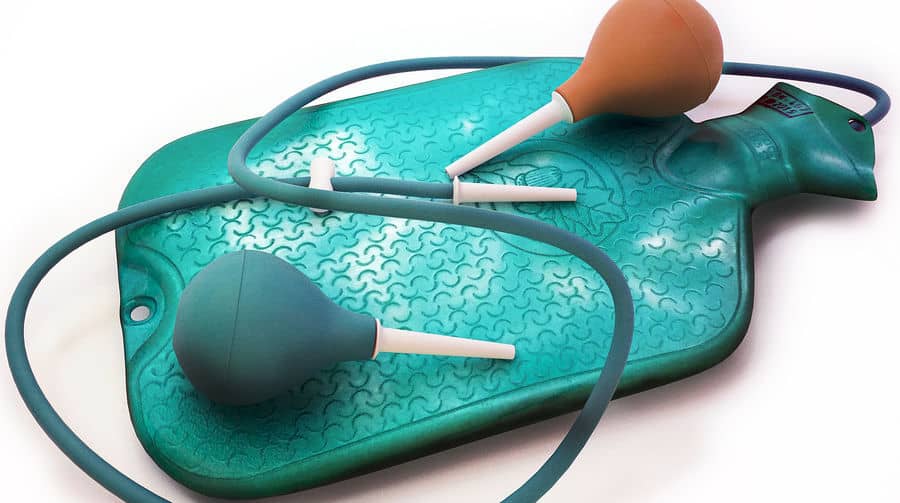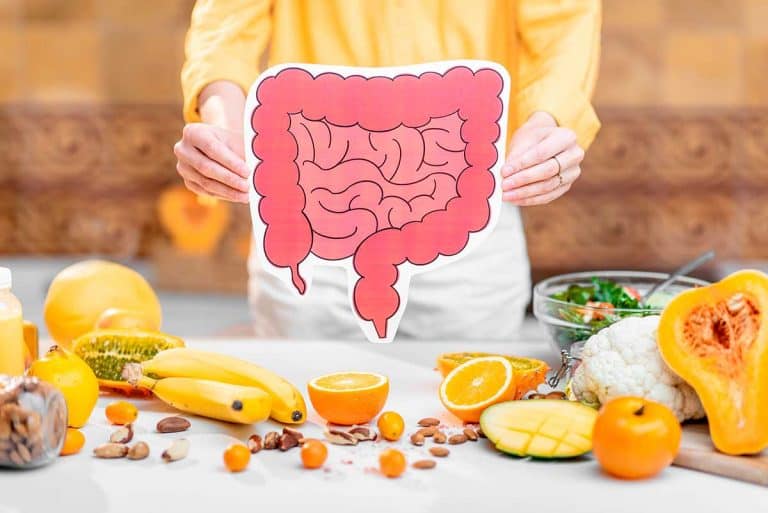What Is a Probiotic Enema? –Instructions and Benefits
An enema injects a liquid or gas into the colon, specifically the lower bowel, through the rectum for therapeutic and diagnostic purposes. It can be used to expel the colon’s contents, introduce drugs or facilitate X-ray imaging. The term enema can also be used in reference to the content that is being injected into the colon or the tool used to administer it.
A probiotic enema refers to the content injected into the colon, and the term is used to describe an enema containing probiotics. These are microorganisms that are beneficial to your bodily functions, like digestion and the immune system.
Having the right balance of microorganisms in your gut reduces inflammation, improves the efficiency with which nutrients are absorbed, and prevents digestive problems like bloating and gas. It also improves immunity by helping the body in the fight against pathogens that lead to irritation and infection.
Probiotic enemas introduce the probiotics directly in the colon so that they are not eliminated by stomach acids before they can be utilized.
Types of Enema
Before you can fully grasp the benefits derived from the probiotic enema and colon cleansing, it is good to review the reasons why the enema will be necessary in the first place and the expected results.
Therapeutic Enema
In this case, the procedure is done to clean out the colon and rectum to relieve constipation or treat gastrointestinal illnesses such as variants of inflammatory bowel movement disease (IBM) like Crohn’s disease or ulcerative colitis (UC).
These diseases cause inflammation and sometimes ulcers. The enema will introduce treatment right at the center of the problem while relieving the bowels from handling food, albeit temporarily.
Cleansing Enema
This is also a type of therapeutic enema, but the main target is to clean out the bowel. It is usually done to facilitate a medical procedure such as a colonoscopy; to enable the doctor to examine the colon clearly without interference from food particles.
It also lowers the bacterial levels in the colon, reducing the chances of infection during certain surgeries.
Detoxification Enema
This enema is administered with the intention of having its ingredients clear the body of inflammation. Some ingredients like probiotics (as we shall see later on) are billed to provide health benefits beyond the colon, not limited to the elimination of toxins from the body and increasing useful bacteria.
Diagnostic Enema
This kind of enema helps in diagnosing medical conditions within the colon and rectum. Besides clearing out the gut, they make it easier to see inside.
A barium enema is an example of a diagnostic enema as barium is a radiocontrast agent, meaning it shows conspicuously on X-rays. It acts as a flare inside the gut, allowing the doctor to view the colon.
Enemas can also be broadly classified into two categories based on how they work: retention enemas and cleansing enemas.
Retention enemas are used to introduce healthy or essential substances in your body for absorption and consequent use in diverse bodily functions. They can administer food, water, or medicine to stimulate the immune system and for localized treatment.
Cleansing enemas wash the colon and remove what is inside. They are used to clear congestion, like when relieving constipation and preparing for medical procedures, which require the colon to be emptied beforehand.
Probiotic enemas fall in the category of retention enemas as they are meant to introduce probiotics into the bowel so the gut can reap the many benefits associated with them.
Benefits of Probiotic Enema
Probiotics have demonstrated the ability to treat vaginal infections, improve symptoms of lactose intolerance and remedy a host of gastrointestinal problems, including diarrhea and indigestion. However, research is still underway to prove this beyond doubt and confirm their efficiency compared to other treatments.
They also boost your immune system and overall health. In addition, they jumpstart remission in terminal gastrointestinal disorders that are not yet curable but are easily manageable with the right ingredients.
It is worth noting at this point that probiotic enema has been tested on infants with active rectal ulcerative colitis with positive results. Besides reducing remission, inflammation and discomfort also went down.
The friendly microbes can restore your intestinal bacterial balance during and after an antibacterial regimen. They prevent the development of harmful bacteria in your intestines by colonizing the space and lining the surface of the gastrointestinal tract. They compete for nutrients with the harmful bacteria and activate the body’s cells to fight against them and other pathogens.
They can regulate responses from the immune system and, therefore, manage inflammation, reducing stomach pain, bloating, diarrhea, and the possibility of reinfection. They also strengthen the tissue of the bowel wall.
Choosing the Right Probiotic
Although there hasn’t been any documented case of probiotic overdose, too much of anything is poisonous. The body should be able to expel all the excess bacteria via fecal matter, but it may have some uncomfortable side effects like diarrhea, bloating, and gas.
The bacteria may also interfere with your medication if you are on another treatment regimen, so it is important to consult with your physician before undergoing a probiotic enema. Also, don’t attempt the procedure if you have gallstones or an ulcerative colon.
There is no single probiotic that can be rated as superior to the others based on existing information. There are, however, some that have been used to perform successful enemas, which we can recommend, like Lactobacillus reuteri, bifidobacterium, mutaflor, and 5-aminosalicylic acid (5-ASA) combined with L casei.
There have also been scientific advancements leading to creating products that can combine more than one probiotic. VSL#3, for instance, is a combination of 8 probiotics in 1. It has proven effective in starting the remission of UC, irritable bowel syndrome (IBS), and pouchitis.
Oral Consumption Versus Direct Colonic Delivery of Probiotics
Probiotics can be incorporated into the diet through prebiotic foods and drinks such as yogurt and enriched dairy products full of probiotic cultures. They can also be orally taken as supplements that come in liquid form, as coated capsules, freeze-dried granules, or powder.
Delivery of probiotics through enema enables you to flood the intestinal tract with good anti-inflammatory bacteria and soothe inflammation directly if administered correctly.
Orally consuming them subjects them to bile and stomach acid before getting to the large intestines, which already have their own bacteria. As a result, the probiotics may end up being too weak to dislodge the harmful bacteria by the time they reach their target destination.
When taken rectally, it is easier for the probiotics to effect significant change as they will still have the strength to fight harmful bacteria and colonize the colon.
Many people will still opt to take probiotics orally due to the discomfort associated with enemas. They are also very messy, and you risk rectal perforation if they are not inserted accurately.
Other risks are air emboli, where a bubble can get stuck in your blood vessel and block it, pelvic abscess, where a pocket of infected fluid occurs in your abdominal cavity, which eventually turns to puss or colitis, which refers to inflammation of the colon’s inner lining.
Arranging a Probiotic Enema at Home
Once you have identified what your body needs, it is easy to administer the enema to yourself or a close relative or friend. You already know the potential dangers and will be careful to avoid them.
Requirements
- An enema bag
- Lubricant
- Towel
- Probiotic capsules
- Filtered water
Preparation
Plan for a time when the bowel will be empty, preferably after a bowel movement. This allows better distribution and retention of the probiotics in the gut walls to enhance effectiveness.
It is not advisable to perform an enema if you recently had a gastrointestinal procedure done or you are on other anti-inflammatory drugs like corticosteroids because your bowel will be ultra-sensitive. Also, avoid it if you feel unwell, have chills, sweats, or have a fever.
Check with your physician if your body is in a position to handle the process and what ingredients are acceptable, and the optimal measurements. If possible, have it done in the presence of a professional. If you still feel you can do it yourself (although it would help if you had some assistance), we have captured the steps below.
Procedure
- Pour 12 ounces of the filtered water into a bowl or cup
- Let it sit in the water for a while, up to 8 hours, so it is evenly dissolved (you can prepare the solution overnight, which is convenient considering the recommended time for the procedure is early morning)
- Fill the clean enema bag with the probiotic solution and clamp it firmly in place
- Lie on your side with your knees bent and flexed into your abdomen in the bathtub or on a towel in the bathroom
- Insert the lubricated nozzle into your rectum before releasing the clamp so that the solution can make its way into the colon. Next, squeeze the bottle to ensure its entire content is delivered into your colon.
- Replace the clamp and eject the enema from your rectum when it feels uncomfortable, or your colon is too full.
- Hold the enema inside your colon for up to 15 minutes or as long as you can; you will experience a pressing urge to let it out, which is the body’s reflex reaction to a full colon. Due to this, you should not venture far from the toilet.
- You need to ensure the probiotic is well distributed in the colon, so you should change your position from lying on your left side to your right or vice versa. Try the child pose, bridge, cat-cow, shoulder stand, and any other position you may think of.
- Release the enema and clean up. You can be doing this once a month or as long as is required to relieve your gut from the symptoms. Keep in mind, however, that excessive use of enema has its own set of repercussions.
As long as retention enemas continue being used to relieve irritation and introduce positive microbial in the gut, a probiotic enema will only get more relevant. Its application is increasing every day and for a good reason. It is a natural remedy for most gastrointestinal problems that are yet to be fully exploited.
Disclaimer: While our team of medical expert writers makes every effort to convey the correct, relevant, and most up-to-date information, you should never disregard advice given to you by your medical practitioner or delay seeking medical assistance because of something you have read on Gutsify or received in correspondence from Gutsify. Please refer to our Terms and Conditions.








